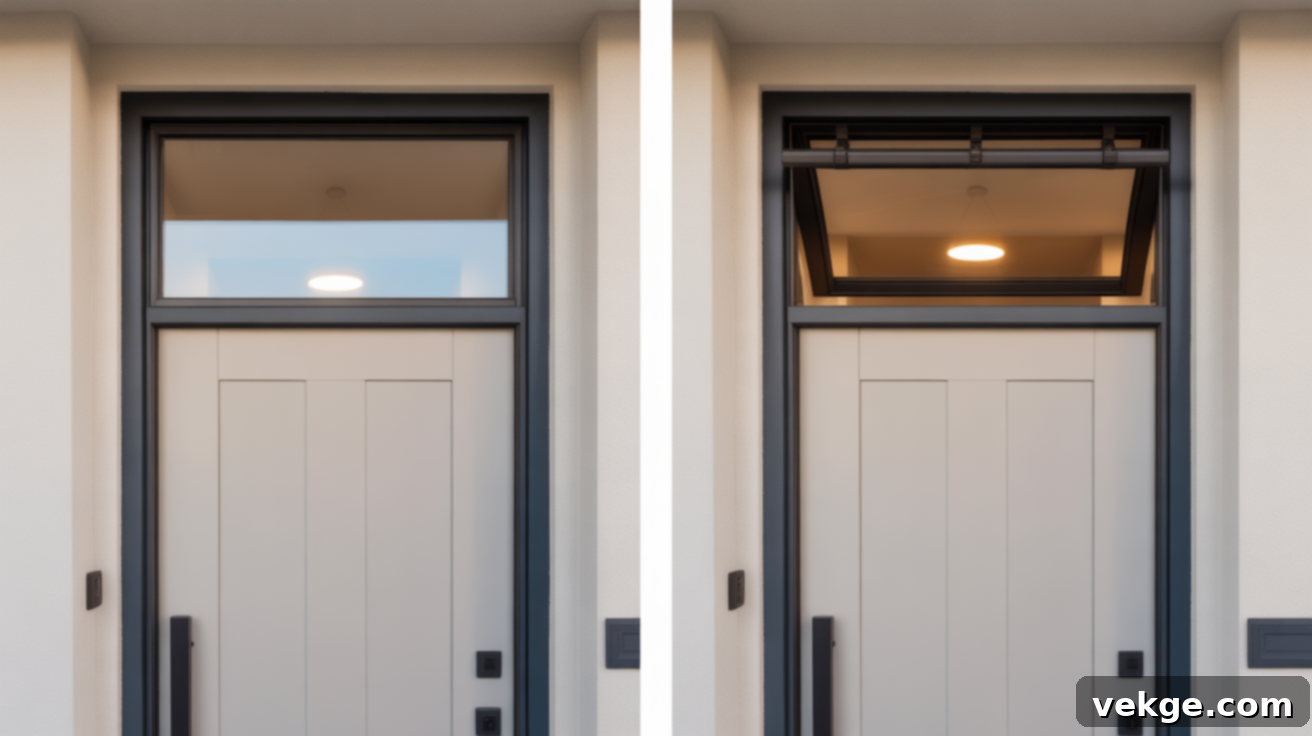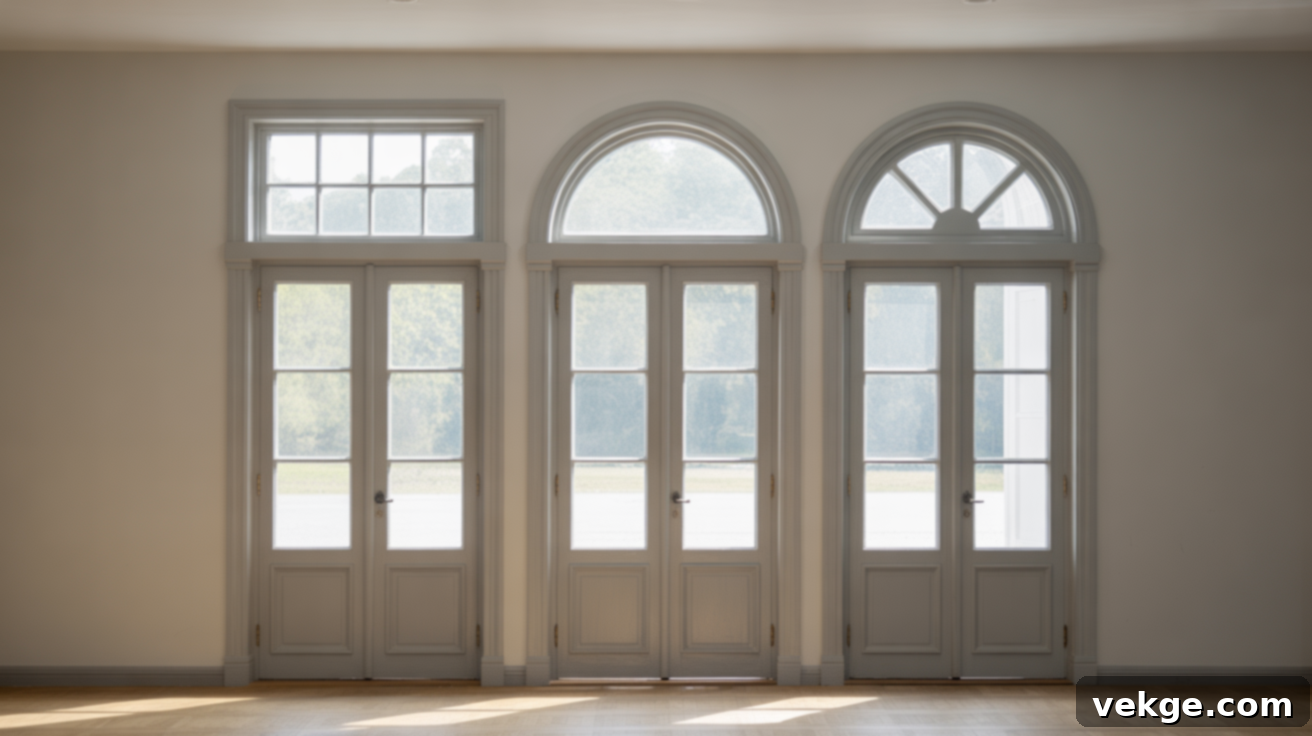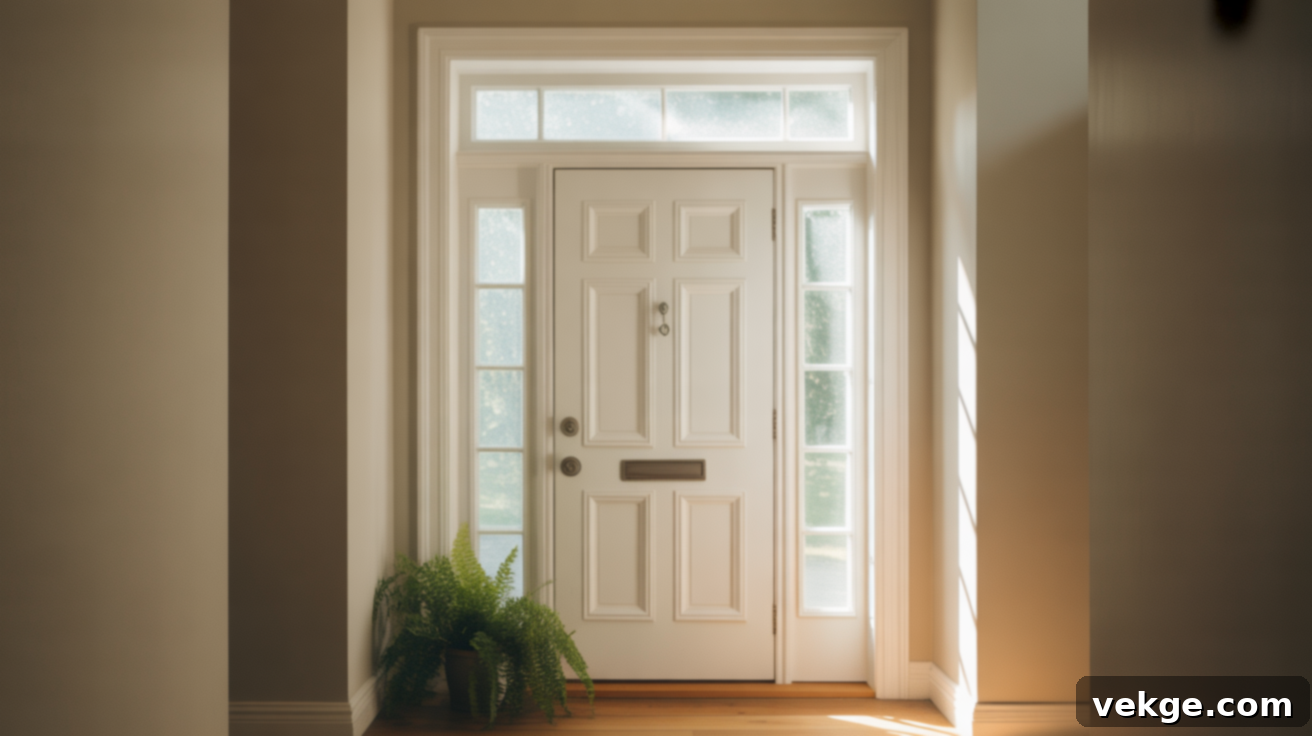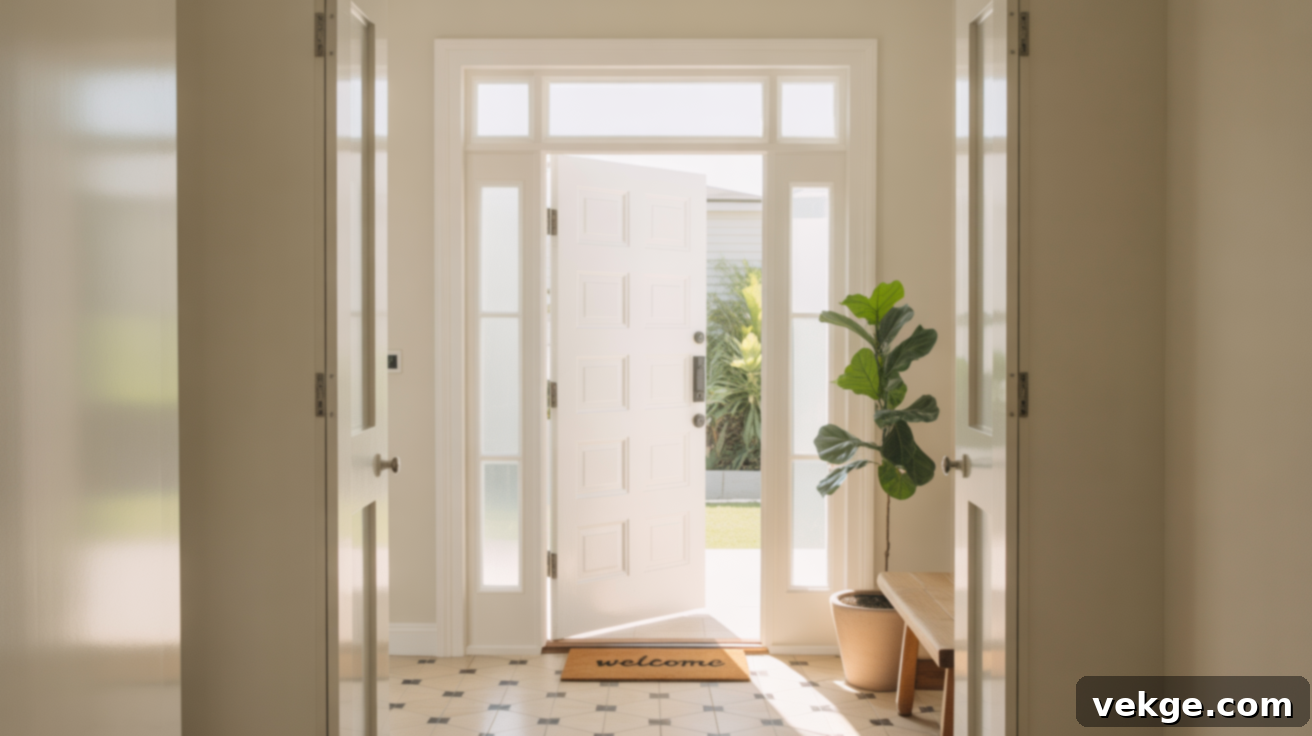Mastering Transom Windows: A Complete Guide to Enhancing Your Home with Light and Style
A transom window is an understated yet powerful architectural element that adds elegance and functionality to any space. Often found nestled above a door or another window, it quietly delivers a host of benefits, from inviting natural light to improving airflow, without demanding the spotlight. These versatile windows are a testament to thoughtful design, offering practical solutions and aesthetic charm in equal measure.
This comprehensive guide will illuminate everything you need to know about transom windows. We’ll explore their fundamental definition, delve into their myriad benefits, and guide you on where they best integrate into your home’s design. You’ll also discover the various types available, learn essential tips to avoid common pitfalls, and gain insights into their proper maintenance to ensure they remain a beautiful and functional feature for years to come.
Whether you’re embarking on a major home renovation or simply seeking to refresh a few areas, incorporating a transom window can be a brilliant design decision. It’s an effective way to infuse your living spaces with light and character, enhancing your home’s ambiance without adding clutter or complexity to your design vision.
The Undeniable Advantages of Transom Windows: Light, Air, and Architectural Grace
At its core, a transom window is a small, decorative, or functional window strategically positioned above a door or a larger window. Its primary purpose has historically been to allow additional natural light to penetrate deeper into interior spaces and to facilitate improved air circulation, all without necessitating significant structural changes or compromising privacy. Their enduring popularity stems from these core benefits, making them a preferred choice for brightening rooms and enhancing ventilation, especially in areas where conventional wall space for windows is limited.
Harnessing Natural Light from a Higher Vantage Point
One of the most compelling reasons to install transom windows is their ability to draw in natural light from an elevated position. Because they are placed high on a wall, often just below the ceiling line, they allow sunlight to penetrate deeper into a room, reaching areas that might otherwise remain dim. This effect is particularly beneficial in challenging spaces such as entryways, long hallways, or rooms with an inherently limited amount of natural light due to their orientation or surrounding structures.
The strategic height of a transom window means it can flood an area with ambient light without requiring the installation of a full-sized wall opening. This offers a simple, elegant solution for brightening darker zones, significantly reducing your reliance on artificial lighting during daylight hours. The subtle wash of light can transform the mood and perception of space, making even compact rooms feel more expansive and welcoming.
Optimizing Air Circulation Without Sacrificing Privacy
Beyond their lighting capabilities, certain types of transom windows are designed to open, providing an excellent mechanism for passive ventilation. This allows fresh air to circulate throughout your home, even when main doors or lower windows are kept closed for security, privacy, or to maintain a consistent temperature. This feature is particularly valuable in tight or enclosed spaces where ventilation is often a challenge.
Consider the benefits in bathrooms, utility rooms, or small bedrooms where an operable transom can effectively draw out stale air or humidity. Because these windows are positioned high up, they permit airflow without compromising the privacy of the occupants or exposing the interior to outside views. This combination of privacy and improved air quality makes them an exceptionally practical choice for various residential and even commercial applications.
Exploring the Diverse Types of Transom Windows
Transom windows are far from a one-size-fits-all solution. They come in an impressive array of types, each offering distinct functional attributes and aesthetic appeals. Your selection will typically involve considering whether you prioritize airflow or a fixed design, the architectural style you wish to complement, and the durability of the frame material. Understanding these variations will help you choose the perfect transom window for your unique space.
Fixed vs. Operable Transom Windows: Functionality First

The fundamental distinction between transom windows lies in their ability to open. This choice hinges largely on whether improved airflow is a primary objective for your installation. Here’s a brief comparison to highlight their key differences:
| Type | Opens or Sealed | Common Use Areas | Key Benefit |
|---|---|---|---|
| Fixed Transom | Permanently sealed shut | Hallways, entryways, formal living rooms | Maximizes light penetration without drafts; lower maintenance. |
| Operable Transom | Can be opened (e.g., hinged, casement, awning) | Bathrooms, kitchens, laundry rooms, bedrooms | Significantly improves airflow and natural ventilation; enhances indoor air quality. |
While both styles contribute aesthetic value and allow natural light, operable transom windows excel where ventilation is a critical need. They can be particularly useful in maintaining comfortable temperatures and reducing humidity. Fixed options, on the other hand, are often favored for their simplicity, clean lines, and ability to introduce light without concerns about thermal efficiency or moving parts, making them popular in contemporary designs where light is the sole focus.
Harmonizing with Your Home: Common Transom Window Shapes

Transom windows are not confined to a single geometric form; they are available in a variety of shapes designed to complement diverse architectural styles and interior aesthetics. Selecting the appropriate shape is crucial for ensuring the window seamlessly integrates with your home’s existing design and visual flow:
- Rectangular: This is by far the most ubiquitous and versatile shape. Its clean, straight lines make it an ideal choice for both minimalist modern homes and classic traditional settings. Rectangular transoms provide a consistent and predictable spread of light.
- Arched: An arched transom introduces a softer, more traditional aesthetic. It pairs beautifully with arched doorways or can be used to add an element of classic elegance in interiors that benefit from gentle curves and decorative flair. They often evoke a sense of grandeur and historical charm.
- Segmented Arch: Offering a balanced compromise between the strict lines of a rectangle and the full curve of an arch, a segmented arch features a gentle, flattened curve resting on a straight base. This shape provides a subtle architectural detail that can soften a space without being overly ornate, fitting well into transitional styles.
The shape you ultimately choose will significantly influence how the transom window interacts with and complements the architectural narrative of your home. Each shape casts light differently and contributes distinctively to the perceived openness, formality, or warmth of the room.
Frame Materials: Durability, Aesthetics, and Maintenance Considerations

The material chosen for your transom window frame is a pivotal decision, directly influencing its longevity, visual appeal, energy efficiency, and required daily upkeep. Different materials offer unique advantages in terms of strength, insulation properties, and resistance to various environmental factors. Understanding the characteristics of each will help you make an informed choice:
- Vinyl: Renowned for its exceptional low maintenance and impressive moisture resistance, vinyl is an excellent choice for areas prone to humidity, such as bathrooms, kitchens, and laundry rooms. It offers good insulation and comes in various colors, though it can sometimes expand and contract with extreme temperature changes.
- Wood: Wood frames provide an unparalleled classic and warm aesthetic that can be stained or painted to match any interior. However, they require diligent maintenance, including regular sealing, painting, or staining, to protect against moisture, rot, and insect damage. Wood offers good natural insulation properties.
- Fiberglass: Fiberglass stands out for its superior durability, dimensional stability, and resistance to warping, rotting, and insect damage. It performs exceptionally well in diverse climates, tolerating extreme temperatures without significant expansion or contraction, and requires very little upkeep. It’s an energy-efficient option that can be painted.
- Aluminum: Known for its strength, slim profiles, and sleek, modern appearance, aluminum is a durable choice. While robust, aluminum can be a more conductive material than others, potentially leading to higher heat loss in colder climates or heat gain in warmer ones, unless equipped with thermal breaks. It is, however, low maintenance and resistant to corrosion.
Optimal Placements: Where Transom Windows Shine in Your Home
Transom windows possess a remarkable versatility, making them suitable for a wide range of applications throughout the home. From grand entryways to intimate bathrooms, these windows are adept at creating a sense of openness and airiness without sacrificing essential privacy or contributing to visual clutter. Their strategic placement can transform the feel and function of various rooms.
Elevating Entryways: Above Front Doors
Positioning a transom window above your main entry door is a classic and highly effective design choice that simultaneously enhances curb appeal and improves interior lighting. This configuration allows a generous influx of natural light to stream into the entryway from above, serving to brighten what can often be a dark or enclosed foyer or hallway.
Many homeowners opt for this placement to create a more welcoming, well-lit entrance, particularly in homes that lack adjacent sidelights or large windows. The transom adds architectural interest and visual height to the doorway, making a significant first impression and setting the tone for the rest of your home.
Connecting Spaces: Between Indoor Rooms
In homes with more traditional or older layouts, internal walls frequently create divisions that inadvertently block the flow of natural light between rooms. Installing a transom window above an interior doorway offers an elegant and non-intrusive solution to this common design challenge. This approach is particularly effective in spaces like hallways or traditionally closed-off rooms that could greatly benefit from shared illumination.
By allowing natural light to filter through from one space to another, an interior transom makes areas feel less confined, more interconnected, and significantly brighter. It’s a sophisticated way to achieve an open-concept feel without the expense or disruption of removing entire walls or undertaking extensive structural modifications.
Seamless Transitions: Over Patio or French Doors
The addition of transom windows above patio or French doors profoundly enhances the connection between indoor and outdoor living spaces. These elevated windows permit an abundance of light to enter the room from the top, even during times when the main doors are covered by curtains or blinds for privacy or sun control. This ingenious setup ensures the room maintains a bright and airy ambiance without fully exposing the interior.
Beyond their practical lighting benefits, transoms visually extend the height of the doorframe, contributing to a sense of grandeur and balance within the wall. This effect is especially pronounced in rooms boasting high ceilings or large, open-plan layouts, where they can make the transition to the outdoors feel even more expansive and harmonious.
Private Illumination: Shower Walls or Bathroom Dividers
Bathrooms, particularly those in smaller homes or apartments, often suffer from a lack of natural light. A sealed (fixed) transom window, strategically placed above a shower wall or an internal bathroom divider, presents an intelligent solution for introducing light without compromising essential privacy. These compact windows, situated high on the wall, allow diffused sunlight to filter into the space while completely shielding the interior from outside views.
This is an exceptionally clever and space-efficient method to brighten otherwise dim and enclosed areas such as shower stalls, toilet rooms, or even small powder rooms. By providing light from above, it minimizes the need for large, exposed window openings, making it a perfect choice for creating a private, serene, and well-lit bathroom environment.
The Balance: Understanding What Works and What Doesn’t with Transom Windows
Before committing to the installation of transom windows, it’s essential to weigh their advantages against potential drawbacks. A thorough understanding of their pros and cons will empower you to make an informed decision that aligns perfectly with your home’s specific needs and your design aspirations.
The Clear Advantages: Pros of Transom Windows
Transom windows offer a compelling blend of aesthetic appeal and practical functionality, making them particularly valuable in spaces that benefit from enhanced natural light and thoughtful design. They are remarkably adaptable, fitting gracefully into challenging spots or complementing unique architectural layouts.
- Adds Subtle Architectural Detail: Transoms introduce a refined design element that can beautifully break up large expanses of wall space. They contribute character and a sense of history or modernity without overwhelming the room’s existing decor.
- Works with Existing Doors or Layouts: One of their greatest strengths is their flexibility. Transoms can often be incorporated without requiring extensive structural overhauls to your home’s existing framework or floor plan, making them an ideal choice for updates or renovations.
- Improves Indoor-Outdoor Connection: When strategically positioned above patio or French doors, transoms extend vertical sightlines, visually linking interior spaces with the outdoors. This creates a more open, airy, and interconnected feel.
- Preserves Valuable Wall Space: By virtue of their elevated placement, transom windows leave the lower wall space free. This allows you to comfortably place artwork, install shelving, or arrange furniture directly beneath them, a luxury often not afforded by larger, full-height windows.
- Maintains Privacy While Adding Light: Their high placement is a distinct advantage in privacy-sensitive areas like bathrooms, bedrooms, or hallways. They allow ample natural brightness to flood the space without exposing the interior to unwanted outside views.
Potential Hurdles: Cons of Transom Windows
Despite their undeniable appeal and numerous benefits, transom windows are not entirely without their challenges. Improper installation or opting for lower-quality models can sometimes lead to issues that outweigh their intended advantages, making careful planning and selection crucial.
- Can Be Challenging to Clean: Due to their elevated position, reaching transom windows for routine cleaning can be difficult. This often necessitates the use of ladders, extension poles, or specialized cleaning tools, potentially adding to maintenance effort.
- Not Always Energy Efficient: Older or poorly constructed transom windows, especially those lacking modern insulation properties or proper sealing, can become sources of heat loss in winter or heat gain in summer, potentially leading to drafts and higher energy bills. Modern, energy-efficient transoms mitigate this concern.
- Limited Ventilation with Fixed Styles: If you choose a fixed transom window, it will provide light and architectural charm but will not contribute to airflow. If ventilation is a priority, an operable model is essential.
- Higher Installation Cost for Retrofits: While adding a transom to a new construction is straightforward, retrofitting one into an existing wall or doorframe often involves additional labor and structural modifications, which can increase the overall installation cost.
- Potential for Water Leaks: As with any window installation, poor sealing or inadequate flashing around a transom window can lead to moisture infiltration. If not properly installed and sealed, water leaks can cause long-term damage to walls and framing.
Essential Maintenance Tips for Long-Lasting Transom Windows

Proper maintenance is key to extending the lifespan of your transom windows, ensuring they continue to perform their functions optimally, and maintaining a comfortable indoor environment. These simple, proactive care steps can prevent a host of long-term problems and preserve their beauty.
- Gentle Cleaning Practices: Always use a soft, lint-free cloth and a non-abrasive, mild glass cleaner. Avoid harsh chemicals or rough sponges that could scratch the glass or damage the frame finish. This technique helps prevent streaks and keeps the glass sparkling clear.
- Regular Sealant Inspection: Periodically inspect the caulk and sealant around the window frame. Look for any signs of cracking, peeling, or deterioration, especially in older or operable models. Compromised sealant can lead to air drafts and moisture intrusion.
- Dusting with Extendable Tools: Given their high placement, dust and cobwebs can accumulate. Use a duster with an extendable handle or a vacuum cleaner attachment to easily reach and clear away debris, keeping the glass and frame free from build-up.
- Prompt Sealant Replacement: If you discover cracked, missing, or deteriorated sealant, address it immediately. Removing old caulk and applying fresh, high-quality exterior-grade sealant will prevent water from entering the window cavity and causing potential structural damage or mold growth.
- Lubricate Operable Components: For transom windows that open, regularly apply a silicone-based lubricant spray to hinges, latches, and any operating mechanisms. This ensures smooth functionality, prevents sticking, and extends the life of the moving parts.
Conclusion: Brighten Your Home with the Timeless Charm of Transom Windows
You now possess a comprehensive understanding of what a transom window is and the transformative impact it can have on your living spaces. From their subtle ability to flood a room with natural light to their efficiency in enhancing air circulation, these architectural gems offer both practical utility and undeniable aesthetic appeal.
Adding a transom window above an entry door, between interior rooms, or even within a bathroom is a remarkably intelligent and elegant way to improve your home’s natural illumination and ventilation. It’s a design detail that offers significant returns on investment, creating a lighter, more open, and inviting atmosphere throughout your property.
If you’ve been contemplating ways to upgrade your space without the commitment of a full-scale remodel, a thoughtfully chosen and expertly installed transom window might just be the missing element you’ve been searching for. Its timeless charm and functional benefits make it a worthwhile consideration for any homeowner looking to enhance their environment.
Eager for more innovative home improvement ideas? Explore our extensive collection of home improvement blogs to continue learning and planning your next smart update, transforming your house into the home of your dreams, one thoughtful detail at a time.
